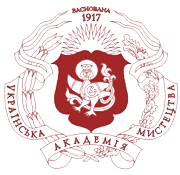CHAOSMOTIC NATURE OF DECONSTRUCTIVISM ARCHITECTURE
DOI:
https://doi.org/10.32782/2411-3034-2022-32-24Keywords:
architecture, harmony, deconstruction, aesthetics, cosmos, cha os, chaosmos.Abstract
Abstract. The article reveals the problem of the development of non-classical approaches in various disciplines, which led to the formation of a new, synergistic paradigm about Chaos, as a state of dynamic disorder, which contains the potential for the emergence of a new harmony. The stylistic field and aesthetosphere of deconstructivism was formed together with avant-garde attitudes and the search for a new expression of art long before the declarative approval and official naming of the style. The aesthetic sphere of this stylistic flow belongs in a certain way to Chaosmos, as a conceptual unit. Postmodern philosophy formulated a number of fundamental attitudes: the philosophy of the “other” (dialogue), speech games, the gap between content and form, function and form, postmodern sensuality, the general understanding of the world as chaos. All these installations influenced the theory and practice of architecture. The task of architectural non-linearity is to express and organize complexity while preserving aesthetics. Deconstructivism, as a new architectural language, is gaining popularity with the advent of the era of digital modeling tools. This brought into the complex design process the possibility of translating the variability of forms into the engineering language of drawings. Its main principle was a formative approach to natural systems. The aesthetic categories of beauty and ugliness are based on the opposition of Cosmos and Chaos. The assessment of what belongs to the category of Chaos depends on two main traditions of understanding Chaos – negative (ultimate, entropic, destructive) or positive (primary, constructive). The connotations (co-meanings) of the mythologeme of Chaos are close to the connotations of the symbolic hypostasis of the Stranger and the Third in communicative philosophy. Mythological Chaos is almost completely identical to the image of the Stranger (enemy) and is included in cosmic dualism (opposition “one’s own – another’s”). Non-classical-synergistic Chaos approaches the image of the Third or Arbiter as a mediator. The classical cultural paradigm gravitates towards the first option, the non-classical one towards the second. In the “optimistic” version, Chaos appears as a sphere of freedom that provides human culture with a potential opportunity to reach a higher level of organization. Alternations of Chaos – Cosmos – Chaos are subject to cyclical changes. Computer technology allows conducting experiments designed for predictability of the result (so-called “threshold” technologies). Any previously unthinkable form – curvilinear, techno-organic, organic – is relatively easy to read by a computer. The special aesthetics of virtual architecture, freed from architectural regularities, affects real design.
References
Більченко Є.В. Культурологічний дискурс філософії діалогу: Чужий. Інший. Ближній. Третій : дис. ... доктора культурології : 26.00.01. Київ : Національний педагогічний університет ім. М.П. Драгоманова, 2011. 442 с.
Босенко А.В. Случайная свобода искусства. Киев : Химджест, 2009. 584 с.
Волинець А.А. Художня інтерпретація міфологеми хаосу в мистецтві ХХ–ХХІ ст. : дис. ... кандидата філософських наук : 09.00.08. Чернігів : Чернігівський НПУ ім Т.Г. Шевченка, 2016. 227 с.
Делез Ж. Складка. Лейбниц и барокко / пер. с франц. Б.М. Скуратов. Москва, 1997. 264 с.
Елинер Н.Г. Процессы стилеобразования в пространственных искусствах. Киев, 2005. 129 с.
Зедльмайр Х. Утрата середины. Изобразительное искусство ХІХ и ХХ веков как симптом и символ времени / пер. с нем. С.С. Ванеян. Москва, 2008. 244 с.
Исаева В.В. Фрактальность природных и архитектурных форм : монография. Харьков. Вестник ДВО РАН, 2006. № 5. 127 с.
Котт Я. Греческая трагедия и абсурд. Современная драматургия. Харьков, 1990. № 6. 167 с.
Кристева Ю. Силы ужаса: эссе об отвращении / пер. с фр. А. Костикова. Харьков, 2003. 256 с.
Лишаев С.А. Эстетика Другого: эстетическое расположение и деятельность. Харьков, 2012. 256 с.
Марсель Г. Відмова від спасіння і величання людини абсурду / пер. з фр. В.Й. Шовкуна. Homo viator. Київ : Вид. дім «КМ Academia», 1999. 235 с.
Меднікова Г.С. Естетичний аналіз актуального мистецтва як чинник формування некласичної теорії. Вісник Чернігівського державного педагогічного університету. Випуск 51. Серія «Філософські науки». Чернігів : ЧДПУ, 2007. 79 с.
Мєднікова Г.С. Ціннісно-адаптаційний потенціал мистецтва постмодерну в аспекті некласичної естетики : автореф. дис. на здобуття наук. ступеня д-ра. філос. наук : 09.00.08 «Філософія». Київ : КНУ ім.Т. Шевченка, 2005. 36 с.
Розенкранц К. Эстетика безобразного. Киев, 2010. 448 с.
Федоров Ю.В. Феномен безобразного: от историко-культурологических истоков до социокультурных реалий наших дней. Севастополь, 2013. 213 с.
Oldershaw R.L. An Infinite Fractal Cosmos. Massachusetts, 2016. 152 с.




